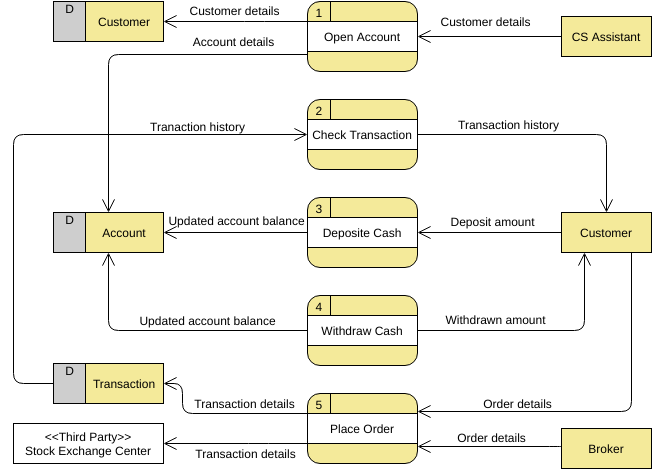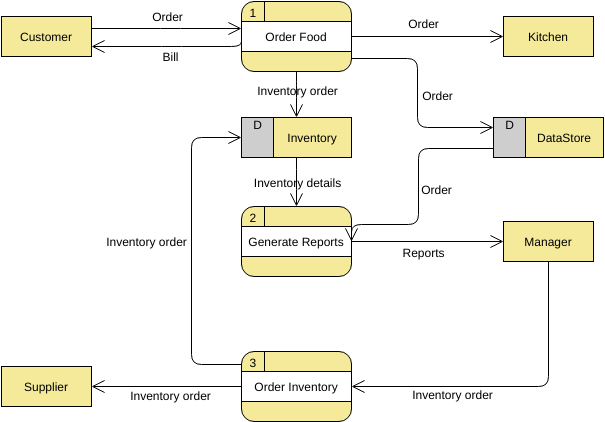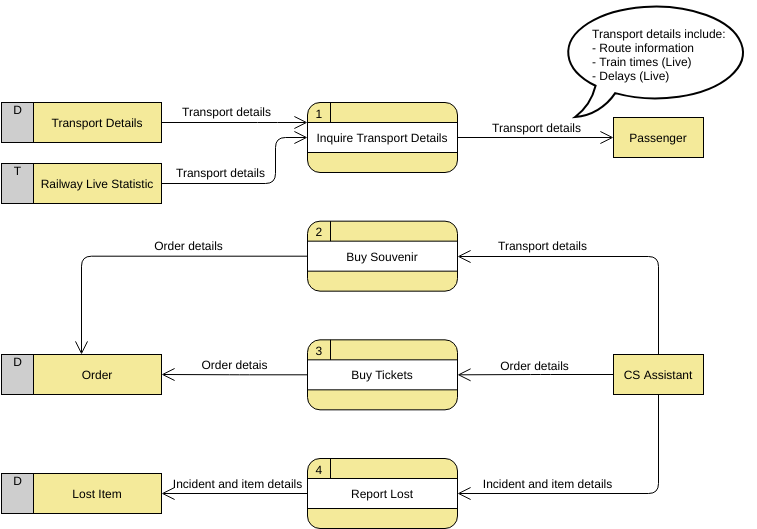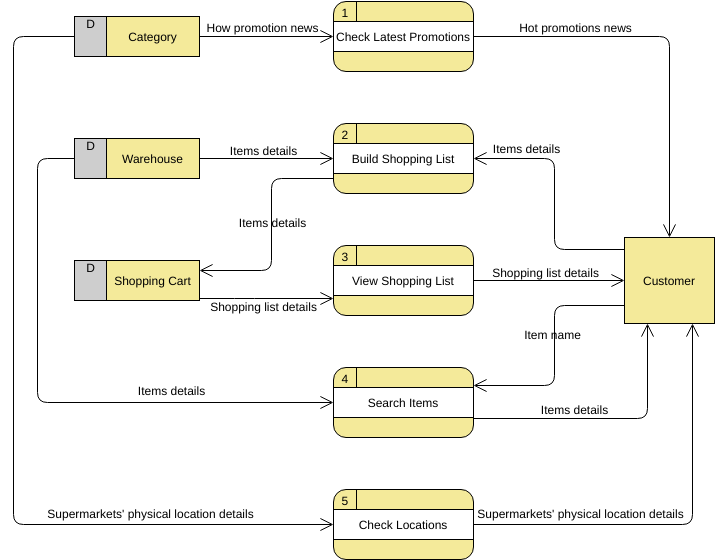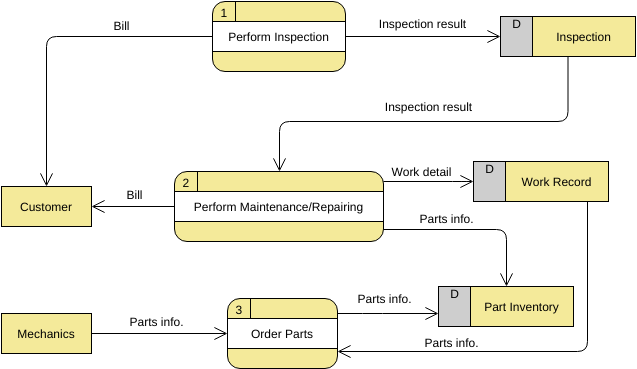diagram kontekstu systemu (znany również jako poziom 0 DFD) jest najwyższym poziomem w diagramie przepływu danych i zawiera tylko jeden proces reprezentujący cały system, który ustala kontekst i granice systemu do modelowania. Identyfikuje przepływ informacji między systemem a podmiotami zewnętrznymi, czyli aktorami.
Diagramy kontekstu są zazwyczaj zawarte w dokumentach wymagań. Muszą być czytane przez wszystkich interesariuszy i dlatego powinny być napisane prostym językiem, aby interesariusze mogli zrozumieć projekt.
Oto przykład diagramu kontekstu dla systemu zamówień sprzedaży:
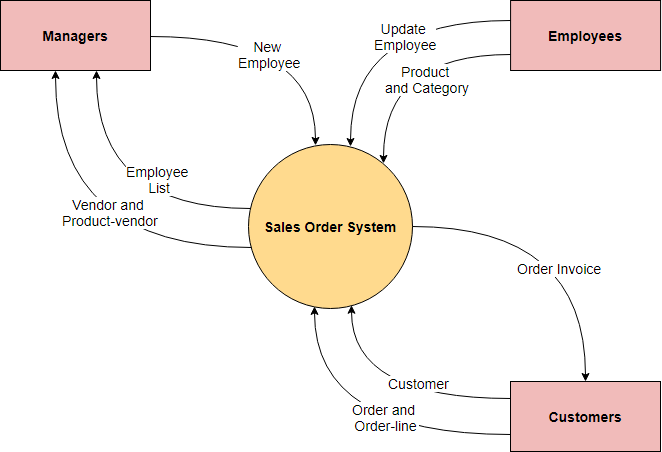
Celem diagramu kontekstu systemu
Celem diagramu kontekstu systemu jest skupienie uwagi na czynnikach zewnętrznych i zdarzeniach, które powinny być brane pod uwagę przy opracowywaniu zestawu wymagań i ograniczeń systemu. Mapy kontekstu systemu są często używane na wczesnym etapie projektu, aby określić zakres badania.
Diagram kontekstu systemu reprezentuje wszystkie podmioty zewnętrzne, które mogą wchodzić w interakcje z systemem. Cały system oprogramowania wygląda jak jeden proces. Taki diagram przedstawia system w centrum, bez szczegółów jego wewnętrznej struktury, otoczony przez wszystkie podmioty zewnętrzne i interaktywne systemy w otoczeniu.
Czym jest dekompozycja od góry do dołu?
W projektowaniu od góry do dołu projektuje się przegląd systemu, określając, ale nie szczegółując żadnego poziomu podsystemu. Następnie każdy podsystem jest doprecyzowywany w większych szczegółach, na przykład czasami dzielony na wiele różnych poziomów podsystemów, aby rozłożyć całą specyfikację na podstawowe elementy.
Głównym celem projektowania od góry do dołu jest rozłożenie systemu na mniejsze części, aby zrozumieć jego podsystemy. Gdy te podstawowe elementy zostaną zidentyfikowane, można je łatwiej zbudować w moduły komputerowe. Gdy moduły są zbudowane, można je łatwo połączyć i zbudować cały system z tych poszczególnych elementów.
Diagram kontekstu na najwyższym poziomie
Diagram kontekstu daje przegląd i jest najwyższym poziomem w diagramie przepływu danych, zawierającym tylko jeden proces reprezentujący cały system. Powinien być podzielony na główne procesy, które dają większe szczegóły, a każdy główny proces może być dalej podzielony, aby dać więcej szczegółów.
- Wszystkie podmioty zewnętrzne są pokazane na diagramie kontekstu, a także główny przepływ danych do i z nich.
- Diagram nie zawiera żadnego przechowywania danych.
- Pojedynczy proces w diagramie na poziomie kontekstu, reprezentujący cały system, może być rozwinięty, aby uwzględnić główne procesy systemu w diagramie następnego poziomu, który nazywany jest diagramem 0.
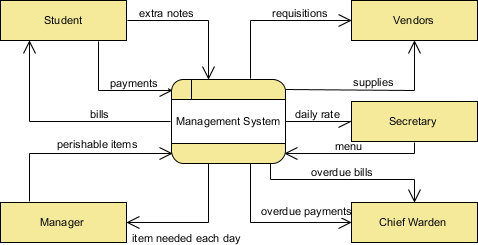
Poziom 1 DFD
Procesy w diagramie 0 (z liczbą całkowitą) mogą być dalej rozwijane, aby przedstawić szczegóły działań przetwarzania. Przykład poniżej pokazuje następny poziom ((Diagram 1) eksplozji procesu.
Zauważ, że:
Chociaż poniższy poziom 1 DFD ma tylko trzy procesy, istnieje dość dużo wejść i wyjść z procesów do podmiotów zewnętrznych, co może prowadzić do kilku krzyżujących się linii w diagramie; aby uniknąć tego problemu, moglibyśmy użyć (widok główny i pomocniczy) wielu widoków tego samego podmiotu zewnętrznego w DFD.
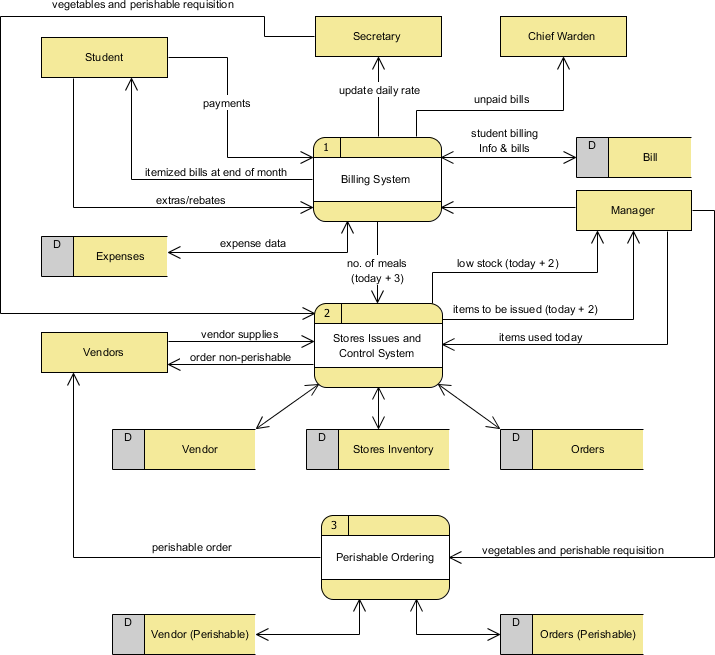
Poziom 2 DFD
Jeśli proces ma dużo przepływu danych łączącego kilka podmiotów zewnętrznych, moglibyśmy najpierw wydobyć ten konkretny proces i związane z nim podmioty zewnętrzne do osobnego diagramu podobnego do diagramu kontekstu, zanim doprecyzujesz proces do osobnego poziomu DFD; w ten sposób możesz zapewnić łatwiejszą spójność między nimi.
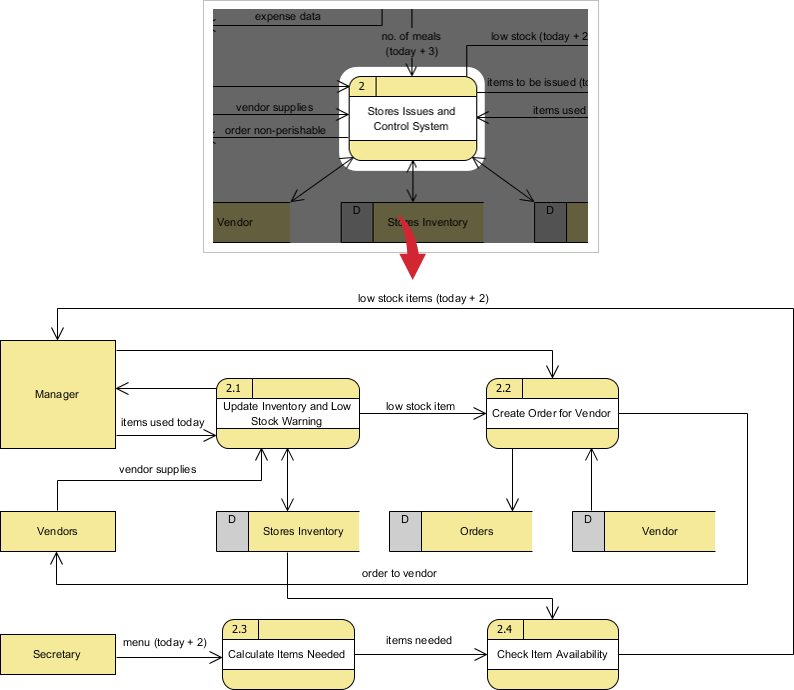
Spójność modelu DFD między poziomami
Podczas przeprowadzania dekompozycji od góry do dołu do DFD na niższe poziomy DFD, wejścia i wyjścia muszą być zachowane między poziomami DFD. Na przykład poziom n i n+1 muszą mieć te same wejścia i wyjścia.
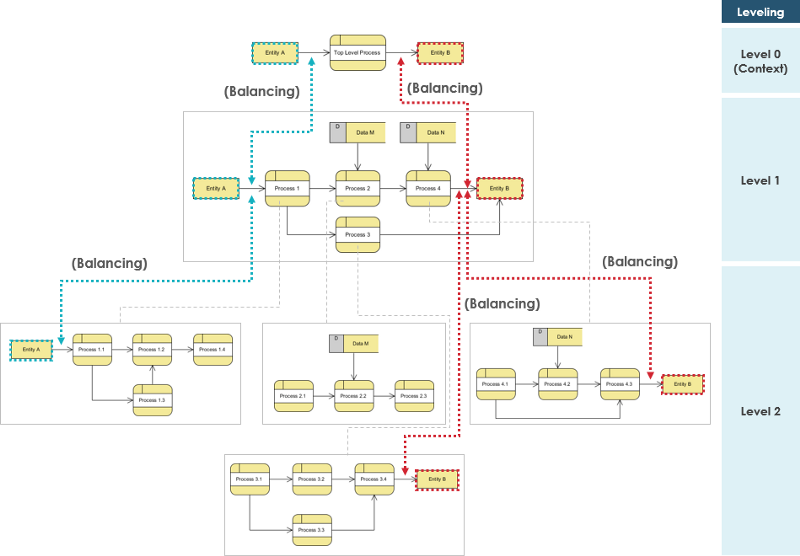
Dowiedz się więcej na podstawie przykładów
Potrzebujesz inspiracji? Oto kilka przykładów diagramów przepływu danych, które pomogą Ci zacząć.
Kliknij na diagram aby go zobaczyć, lub kliknij przycisk edytuj, aby rozpocząć edytowanie.
(*Zasilane przez Visual Paradigm Online)
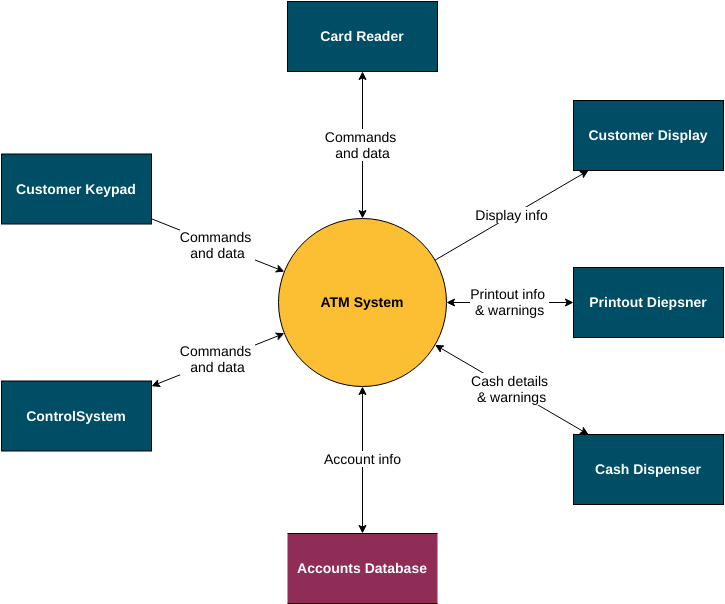
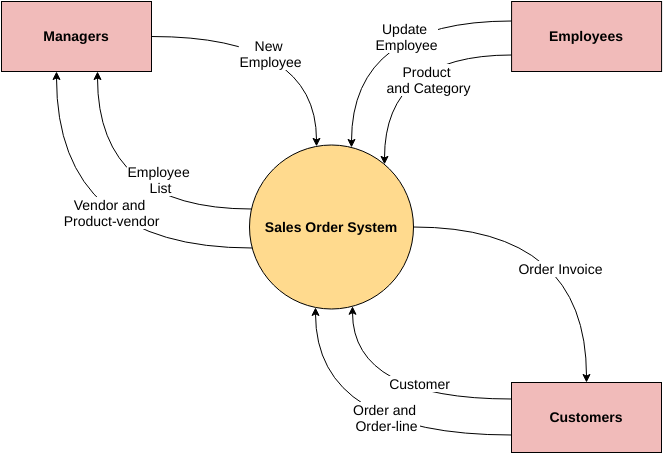
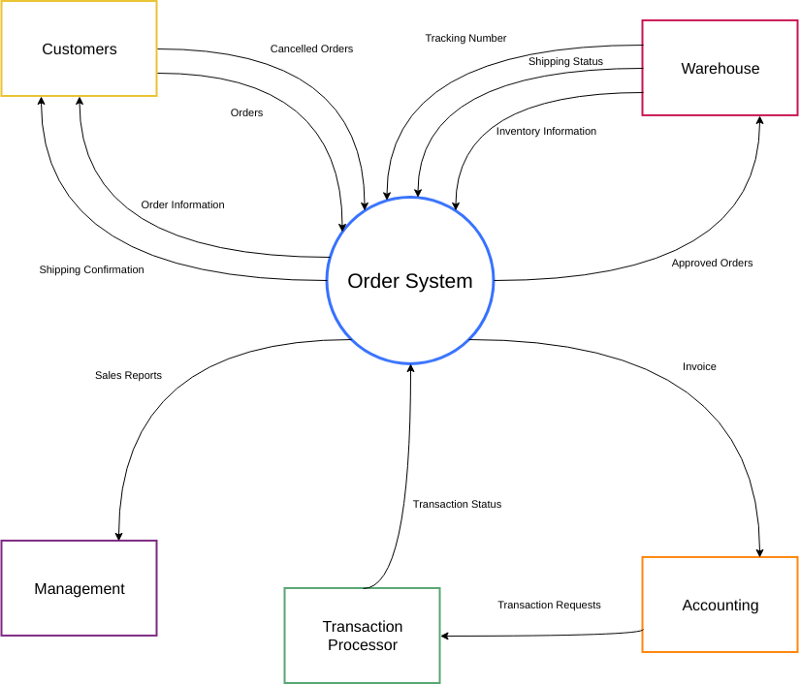
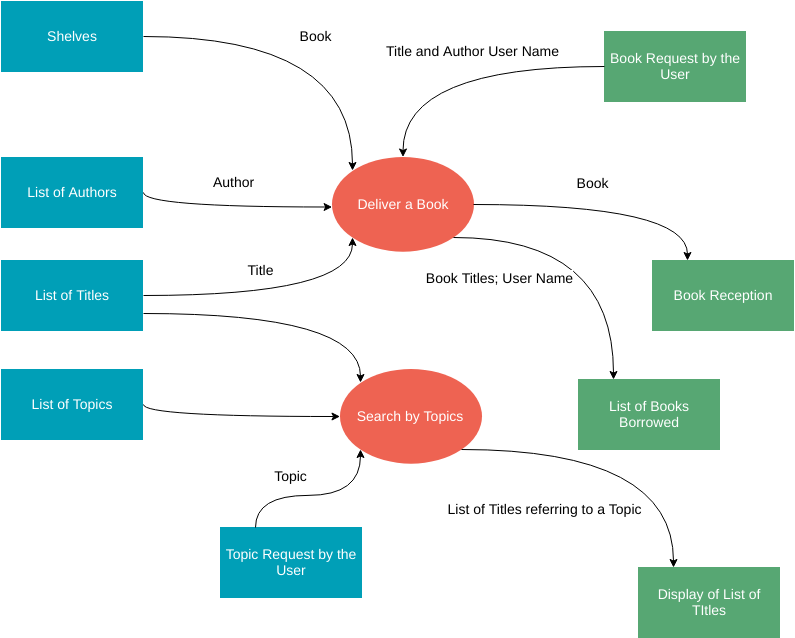
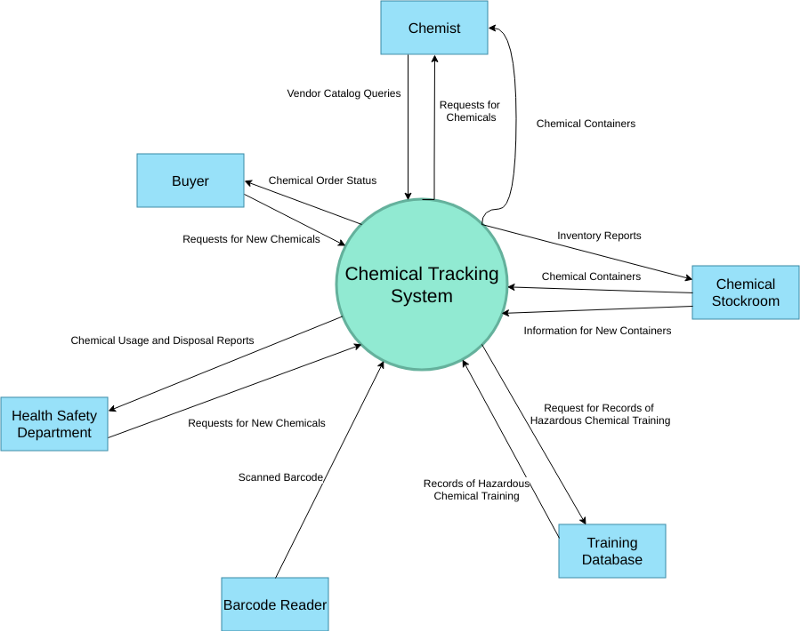
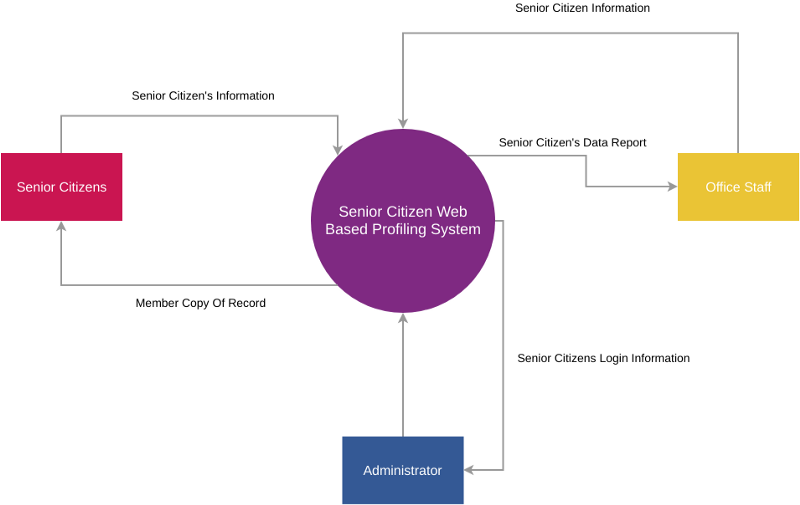
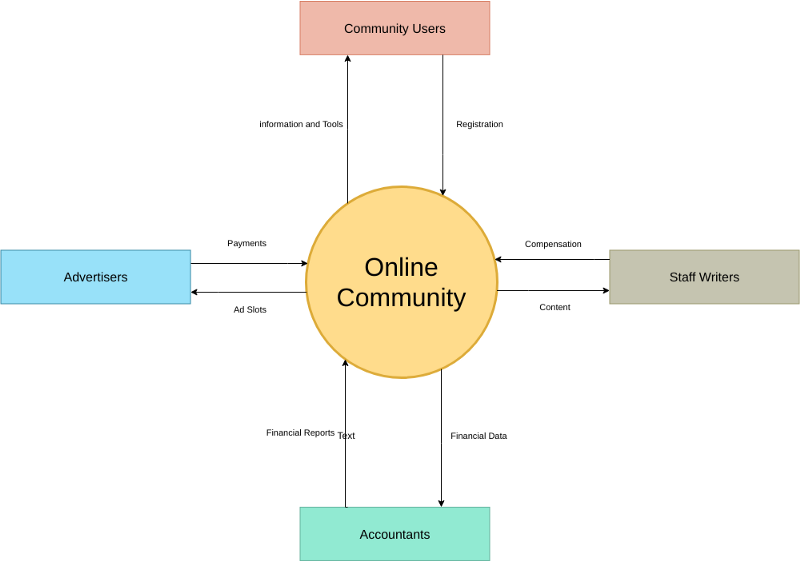
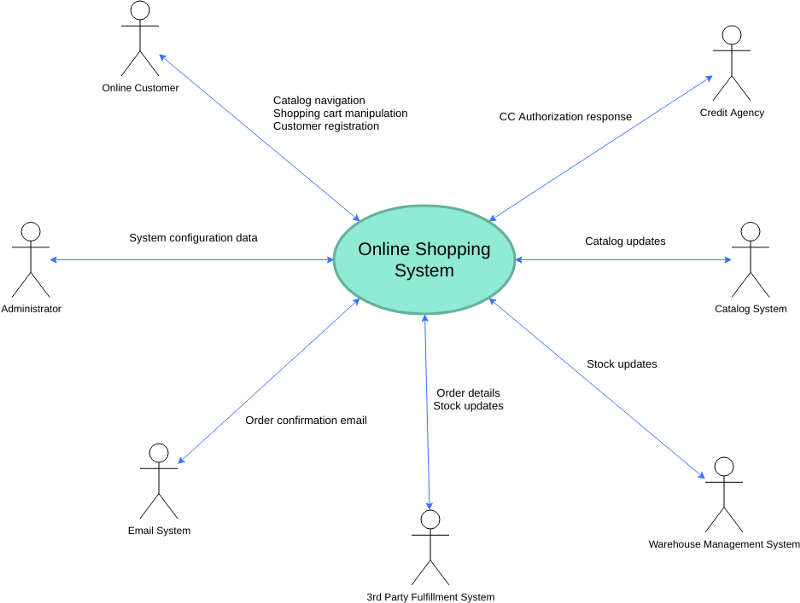
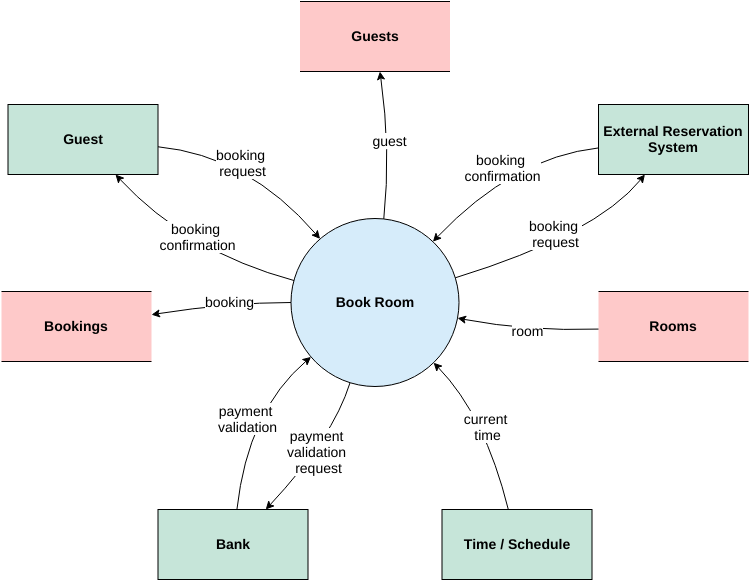
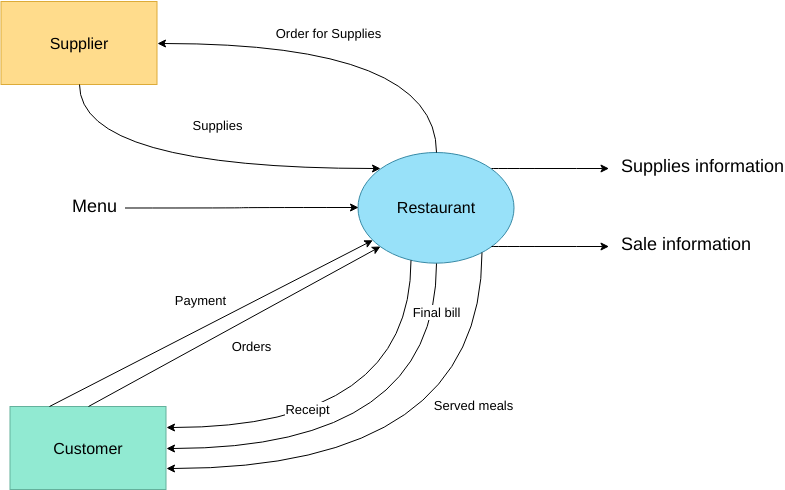
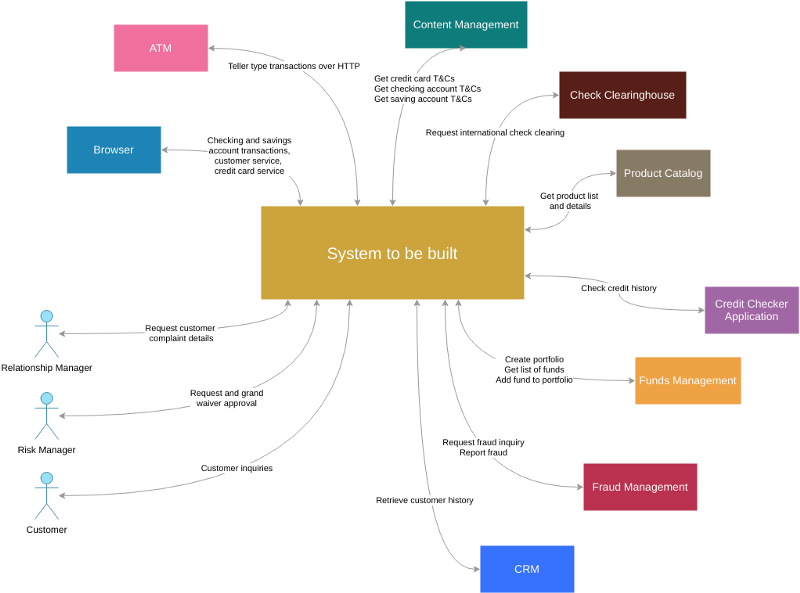
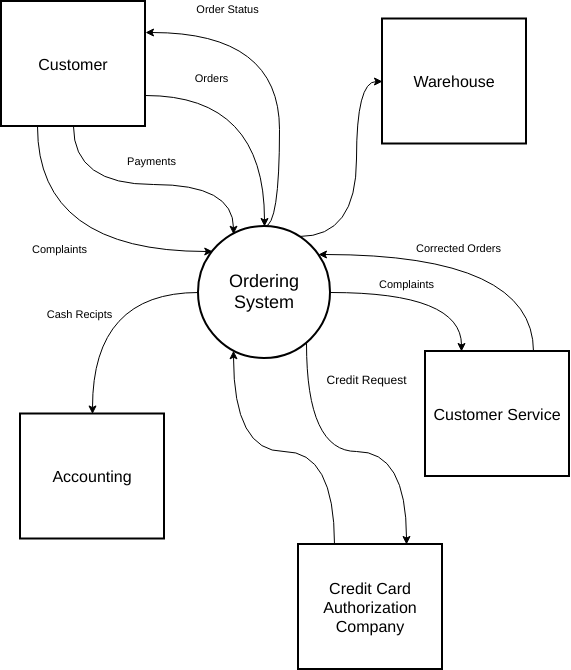
Ten post dostępny jest również w Deutsch, English, Español, فارسی, Français, Bahasa Indonesia, 日本語, Portuguese, Ру́сский, Việt Nam, 简体中文 and 繁體中文














